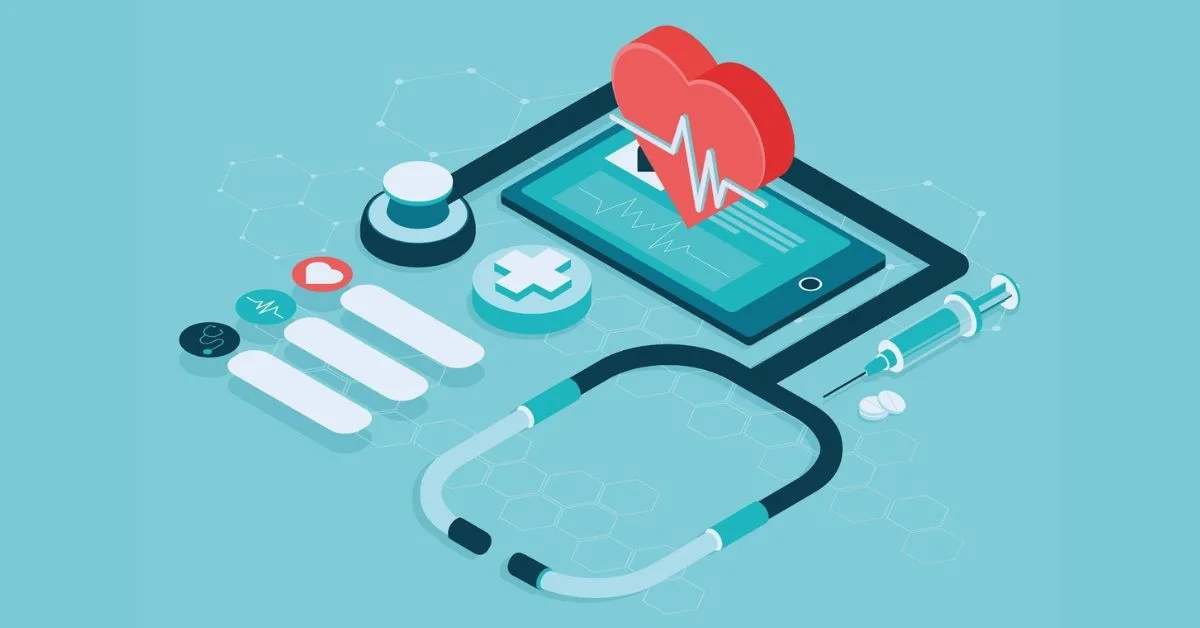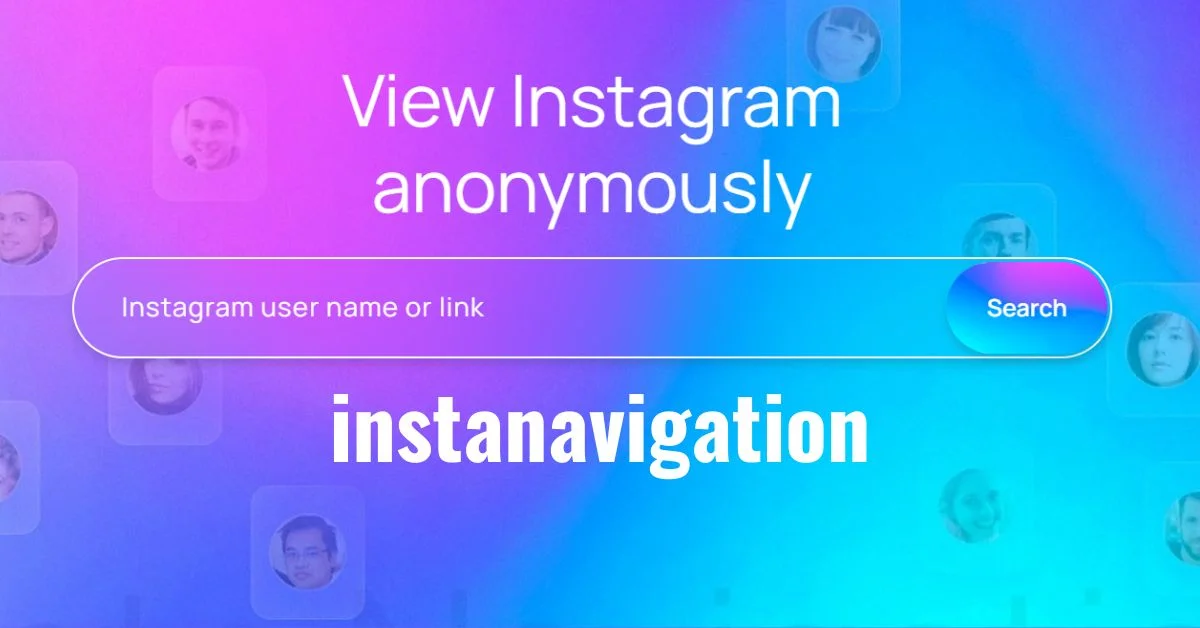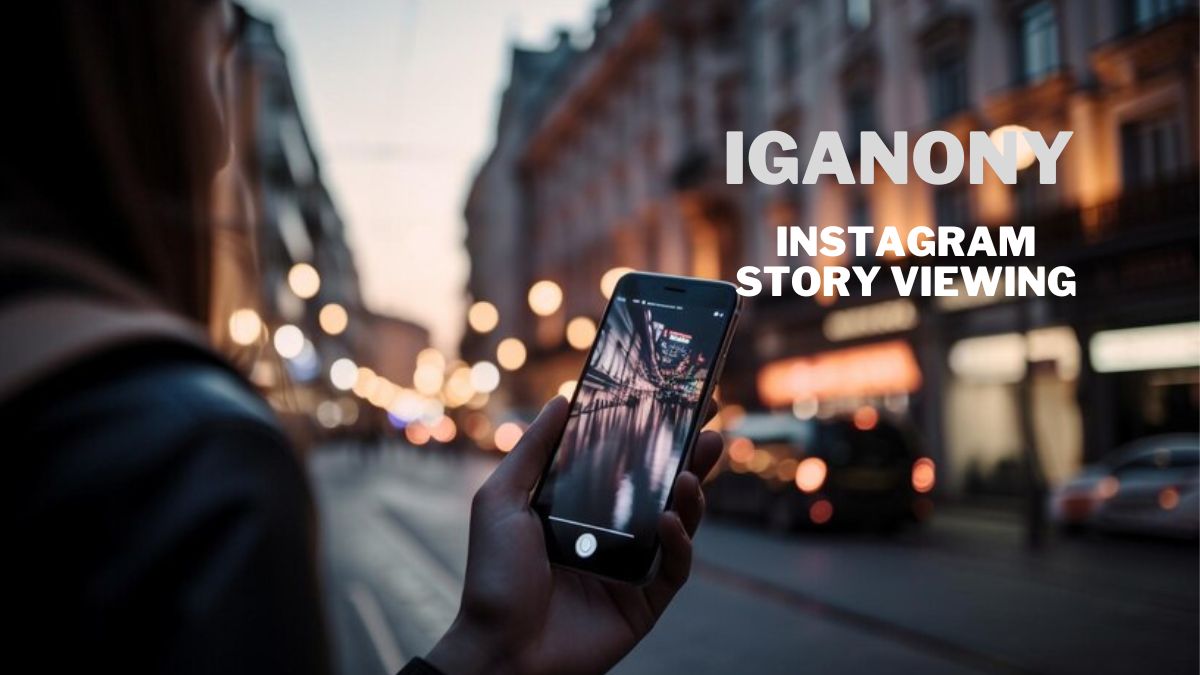APPS & SOFTWARE
Crafting Effective and Accessible Designs for Medical Applications

A well-designed user interface in a medical app is one of the most important variables that determines the success of an app. Here you’ll see ideas and strategies for creating high-quality UI designs for these types of apps.
Today you can find about 145,000 health and fitness apps, but chances are many of them have a lot of problems. It might be a good idea to start working on an application that will compete well and beat out other similar ones. However, you need to make a lot of effort to stand out among competitors and get loyal and satisfied customers.
UX/UI design at the head
The influence of UX is greater in the healthcare business than in other industries. According to many findings, UX contributes 50% to acquire a competitive edge and 33% to client retention rates. A top-tier UI/UX design may transform a healthcare app into an excellent lead-generation tool.
The main purpose of healthcare app design is to make the application accessible to all users. As a result, a sensitive target population may create certain design constraints – if you can overcome them, you’ll have an on-demand healthcare service.
How to Design Healthcare Mobile Apps
Before you start creating an app design, you need to know who your target audience is and what their geographical, socio-demographic, and psychological qualities are, since no product can cater to everyone. Users’ interests and capacities influence how they engage with an application.
Investigate other medical apps design
This stage also includes research, but it is more focused. Let’s call it competitive research. Check out what applications are already on the market before developing a useful product. Analyze leading medical apps, test them, and identify best practices. It is not about copying, but about gaining an understanding of what features are often included in a comparable product. Analyze market needs and consider what vital app features will match these criteria, what the app lacks, and what you can do to make the product easier and more helpful.
You have to guarantee that what you do is relevant and valuable to the consumers and also has the ability to quickly repurpose if something happens. As a result, your software will stand out from the crowd of comparable items.
Focus on the app functionality
When the first two processes have been completed, it is time to design the functionality. In most medical app designs, practicality and usability take precedence above aesthetics. Consider a strategy for instructional onboarding when developing a healthcare app to make the UI intuitive and assist users to avoid irritation with the user experience. Make all the basic functions in 2-3 clicks, this will increase user success.
Create a navigation plan
A simple navigation system is a must-have component for every product design. Proper navigation implies speed and usability. Doctors and patients should be able to obtain critical information quickly since it is a matter of health and life. Simple elements like the hamburger menu, tab bar, or navigation drawer enhance the user experience and the clarity of each button will enable the user to quickly find and select the services they need.
Test before release
Testing is a thorough part of creating mobile healthcare apps as it ensures the reliability, accuracy and security of the app. Thorough testing and QA is extremely important as any error or glitch in a healthcare app can lead to serious consequences such as wrong diagnosis, incorrect treatment suggestions or dangerous situations where patient data is jeopardized. Thanks to full-fledged medical software testing, developers can fix bugs in time. As well as security weaknesses, compatibility and usability issues will be eliminated before the app is dropped to users. This process improves the overall performance and usability of the app.
Keep things simple
Simplicity is the key to a good UX design for mobile health applications. Others may call this technique minimalistic. If you look at the top-ranking healthcare apps on the market, you’ll realize that they all have one thing in common: a simple or minimalistic design. There are several advantages to using a simple design. One of them is to provide users with a clean and professional environment. Isn’t that what you’re looking for during clinical visits? It should be your objective if you want to improve the UX of healthcare software.
Define the color palette
In general, the color scheme of an app is determined by the target demographic and the topic of the app. This article has some information about the topic.
The bulk of healthcare app designs is done in neutral colors, with a predominance of cold-toned blue and green colors, with white for the backdrop. Designers do so to accomplish certain goals, such as using the popular link of calming pastel hues with the healthcare business, reducing fear, and increasing trustworthiness.
Conclusion
The ability to provide value to the end user and solve business problems, including the use of colors and fonts throughout the journey, is what design is all about. Health, fitness, diet, illness, consultations, medication reminders, heart rate and oxygen monitoring – this is all a delicate and complex issue that requires careful and comprehensive consideration. Designers must constantly try to combine the very high standards of security and usability of medical applications with the aesthetics of their interfaces in order to achieve their goals of building the best medical applications in their niche.
APPS & SOFTWARE
Navigating Instagram Stories Anonymously with Instanavigation

Introduction to Instagram Stories Instanavigation and the Concerns of Anonymity
Instagram Stories have taken the social media world by storm. With millions of users sharing snippets of their lives, it’s no surprise that many are curious about what others post. However, not everyone wants to be seen while browsing through these ephemeral tales. Enter Instanavigation: a tool designed for those who prefer to explore Instagram Stories without leaving a trace.
But why would someone want to navigate Instagram anonymously? The reasons can range from wanting privacy while checking out friends’ updates or simply avoiding unwanted interactions. As social media continues to shape our connections and experiences, the need for anonymity has become increasingly relevant. So let’s dive into Instanavigation and discover how this powerful tool can change your Instagram experience forever!
What is Instanavigation?
Instanavigation is a tool designed for those who wish to explore Instagram Stories without leaving a trace. It allows users to view content shared by others while maintaining complete anonymity.
This innovative service caters to privacy-conscious individuals. By using Instanavigation, you can scroll through stories without revealing your identity or appearing in someone’s viewer list.
The platform operates seamlessly, providing an intuitive interface that makes navigation effortless. Users can search for specific accounts and dive into their stories with just a few clicks.
With the rise of social media scrutiny, Instanavigation offers a solution for curious minds wanting to stay under the radar. Whether you’re checking out friends or influencers, this tool enhances your browsing experience while safeguarding your anonymity.
Features of Instanavigation for Anonymous Story Viewing
Instanavigation offers a seamless experience for those looking to view Instagram stories anonymously. One of its standout features is the ability to browse without leaving any trace. Users can explore various profiles while remaining invisible, ensuring their curiosity doesn’t raise eyebrows.
The user-friendly interface makes navigation simple. You can easily input usernames and access stories with just a few taps. There’s no need for complicated setups or downloads.
Another appealing aspect is the support for downloading stories directly. This allows users to save moments that catch their eye, all while maintaining complete anonymity.
Additionally, Instanavigation updates regularly, accommodating changes in Instagram’s platform and enhancing user experience continuously. Its commitment to privacy stands out in today’s social media landscape, making it a go-to tool for many seeking discretion online.
Step-by-Step Guide on Using Instanavigation
Getting started with Instanavigation is a breeze. First, download the app from your preferred platform. Make sure to check for compatibility with your device.
Once installed, open the app and create a user account. This process is straightforward and typically requires just an email address or social media login.
After setting up your account, you’ll see a clean interface inviting you to explore Instagram Stories anonymously. Enter the username of the profile whose stories you want to view without revealing your identity.
Hit ‘Search,’ and within moments, you’ll have access to their story content. You can browse through multiple profiles seamlessly, all while maintaining anonymity.
Don’t forget to explore additional features like saving stories or viewing highlights discreetly—these tools enhance your overall experience on Instagram without any accountability issues attached.
The Benefits of Anonymously Navigating Instagram Stories
Navigating Instagram Stories anonymously allows users to explore content without leaving a digital footprint. This freedom enables you to view stories without the worry of being seen, maintaining your privacy.
Users can gain insights into trends and popular posts within their circles while remaining under the radar. It opens doors for honest opinions on various topics, free from judgment or social pressure.
Anonymity also fosters creativity by allowing individuals to observe how others present themselves. You can gather ideas for your own stories without feeling compelled to reciprocate views or interactions immediately.
Engaging with content in this way helps reduce anxiety associated with social media interactions. It creates a more relaxed experience where curiosity reigns over concern about likes and comments.
Anonymous navigation changes the game, empowering users to consume content at their own pace and comfort level.
Potential Risks and Precautions to Keep in Mind
Using Instanavigation can be enticing, but it’s essential to consider potential risks. Anonymity may feel liberating, yet it can lead to ethical dilemmas. Viewing others’ content without their knowledge could breach trust.
Another risk involves data privacy. While the tool aims for discretion, any third-party application carries vulnerabilities. Ensure you understand how your information is used and stored.
Additionally, relying too much on anonymous viewing might alter social interactions. It could foster a culture of secrecy rather than genuine connection among users.
Always stay informed about Instagram’s policies regarding unauthorized apps. Violations could result in account suspension or other penalties that impact your social media experience negatively. Prioritize safety as you explore this feature to keep your online presence secure and respectful of others’ boundaries.
Conclusion and Final Thoughts on Instanavigation’s Impact on Social Media Usage
As social media continues to evolve, tools like Instanavigation offer users a unique way to interact with platforms such as Instagram. The ability to view stories without revealing your identity can be appealing for those who value privacy or simply want to observe without engaging directly.
Instanavigation not only caters to curiosity but also opens discussions around the ethics of anonymity in online spaces. While many appreciate the freedom it provides, it’s essential for users to weigh these benefits against potential risks, such as violating platform guidelines or crossing personal boundaries set by others.
The impact of Instanavigation on social media usage may lead some people toward a more cautious approach when sharing content. As viewers become aware that their interactions might be hidden from view, they might reconsider what they choose to post publicly.
Navigating this blend of anonymity and interaction requires mindfulness. Tools like Instanavigation could reshape how we perceive engagement on social media and encourage thoughtful contributions while protecting individual privacy rights.
ALSO READ: Iganony: Revolutionizing Instagram Story Viewing for 2023
FAQs
What is Instanavigation?
Instanavigation is a third-party tool that allows users to view Instagram Stories anonymously—without the account owner knowing. It helps preserve privacy while offering seamless story browsing and even downloads, all without leaving a digital footprint.
Is using Instanavigation safe for Instagram users?
Instanavigation is generally safe if you avoid providing sensitive personal data. However, since it’s a third-party tool, users should always check for security measures, privacy policies, and compatibility with Instagram’s terms.
Can you download Instagram Stories with Instanavigation?
Yes, one of Instanavigation’s popular features is the ability to download Instagram Stories anonymously. This enables users to save content without notifying the story owner.
Do I need an Instagram account to use Instanavigation?
No, in most cases, you don’t need to log in to your Instagram account to use Instanavigation. You simply enter the public username of the profile you wish to view.
Is Instanavigation legal and allowed by Instagram?
While Instanavigation isn’t illegal, it does operate outside Instagram’s official app ecosystem. It may violate Instagram’s terms of service, so users should exercise caution and be aware of potential account-related consequences.
APPS & SOFTWARE
Inside # Snapsource.net: Unleashing the Power of Online Efficiency

Snapsource.net is a versatile online platform that provides a comprehensive suite of tools and services for individuals and businesses alike. From content creation to marketing automation, # snapsource.net offers a range of solutions to streamline processes and enhance productivity. In this article, we’ll delve into the depths of # snapsource.net, exploring its features, benefits, and how it stands out in the crowded digital landscape.
History and Background
# snapsource.net was founded in 2017 by a team of experienced developers and entrepreneurs with a vision to simplify online workflows. Over the years, it has evolved into a robust platform trusted by thousands of users worldwide. The journey of # snapsource.net reflects a commitment to innovation and customer satisfaction, driving continuous improvements and updates.
Features and Services Offered
At its core, # snapsource.net is designed to empower users with tools that facilitate content creation, marketing, and automation. Some of its key features include:
Content Creation:
- Templates and Designs: Access a library of professionally designed templates for various purposes, from social media posts to presentations.
- Image Editing: Edit and customize images with built-in tools and filters.
- Text and Typography: Create captivating text content with a wide range of fonts and styling options.
Marketing Automation:
- Email Campaigns: Design and launch targeted email campaigns to engage with customers and prospects.
- Social Media Management: Schedule and publish posts across multiple social media platforms for maximum reach.
- Analytics and Insights: Track the performance of campaigns with detailed analytics and reporting tools.
ALSO READ: EXIJANLE DECODED: THE TECH REVOLUTION
How # snapsource.net Works
# snapsource.net operates on a user-friendly interface that simplifies navigation and access to its features. Users can sign up for an account and start exploring the platform’s capabilities right away. Whether you’re a novice or an experienced marketer, snapsource.net offers intuitive tools and tutorials to help you get started.
Benefits of Using # snapsource.net
The benefits of using # snapsource.net are manifold:
- Time Savings: Streamline your workflows and save time on repetitive tasks.
- Professional Results: Access high-quality templates and tools to create polished content.
- Increased Efficiency: Automate marketing processes for greater efficiency and productivity.
- Scalability: Grow your business with scalable solutions that adapt to your needs.
ALSO READ: EVERYTHING ABOUT APPLE TELEPORT
User Interface and Experience
# snapsource.net prides itself on its user-friendly interface, which is designed to cater to users of all skill levels. The platform’s clean layout and intuitive navigation make it easy to find what you need and get things done quickly.
Pricing Plans
# snapsource.net offers flexible pricing plans to suit different budgets and requirements. Whether you’re a solopreneur or a large enterprise, there’s a plan for you. Pricing is transparent, with no hidden fees or surprises.
ALSO READ: EVERYTHING ABOUT ENVOLVAM
Customer Reviews and Testimonials
Don’t just take our word for it! Hear what our customers have to say about # snapsource.net:
- “Snapsource.net has revolutionized the way I create and manage content. Highly recommended!” – John Doe, CEO
- “The support team at snapsource.net is top-notch. They’re always there to help whenever I have a question or issue.” – Jane Smith, Marketing Manager
Comparison with Similar Platforms
While there are other platforms offering similar services, snapsource.net stands out for its user-friendly interface, extensive feature set, and competitive pricing. Compare for yourself and see why snapsource.net is the preferred choice for businesses and individuals alike.
Integration and Compatibility
Snapsource.net integrates seamlessly with popular third-party tools and platforms, ensuring compatibility and ease of use. Whether you’re using it as a standalone solution or integrating it into your existing workflow, snapsource.net plays well with others.
ALSO READ: EVERYTHING ABOUT TANZOHUB
Security Measures
Security is a top priority at # snapsource.net. The platform employs state-of-the-art encryption and security protocols to safeguard user data and ensure privacy and confidentiality.
Future Developments and Updates
Snapsource.net is committed to ongoing development and improvement. Stay tuned for exciting updates and new features coming soon!
Tips for Maximizing Efficiency on # snapsource.net
- Take advantage of tutorials and resources to learn how to make the most of snapsource.net’s features.
- Experiment with different templates and designs to find what works best for your needs.
- Stay organized by creating folders and labels to categorize your content and campaigns.
Conclusion
In conclusion, snapsource.net is a powerful and versatile platform that offers a wide range of tools and services to streamline content creation, marketing, and automation. With its user-friendly interface, extensive feature set, and competitive pricing, snapsource.net is the preferred choice for businesses and individuals looking to boost their online presence and productivity.
ALSO READ: HD D FDSJ: EXPLORING HIGH-DEFINITION DISPLAYS
FAQs
Is snapsource.net suitable for beginners?
Absolutely! Snapsource.net is designed to be user-friendly, with tutorials and guides to help beginners get started.
Can I cancel my subscription at any time?
Yes, you can cancel your subscription at any time without penalty.
Is snapsource.net compatible with mobile devices?
Yes, snapsource.net is fully responsive and works seamlessly on desktop, tablet, and mobile devices.
Are there any limitations on the number of campaigns I can create?
No, there are no limitations on the number of campaigns you can create with snapsource.net.
Does snapsource.net offer customer support?
Yes, snapsource.net offers dedicated customer support via email and live chat.
APPS & SOFTWARE
Iganony: Revolutionizing Instagram Story Viewing for 2023

Are you tired of missing out on your favorite Instagram stories? Say goodbye to FOMO because Iganony is here to save the day! Dive into the world of seamless story viewing with the best tool in town. Let’s explore how Iganony can revolutionize your Instagram experience in 2024!
How does Iganony work?
Have you ever wondered how Iganony works its magic as the best Instagram story viewer tool in 2024? Let’s take a peek behind the curtain and unveil the mystery.
Iganony operates by utilizing advanced algorithms to access Instagram stories anonymously. By simply entering the username of the account you wish to view, Iganony swiftly retrieves all their latest stories for your viewing pleasure.
Once you input the username, Iganony navigates through Instagram’s security measures with finesse, ensuring that your anonymity remains intact throughout the viewing process. This seamless operation allows you to watch any public or private Instagram story without leaving a trace.
With just a few clicks, Iganony grants you access to a treasure trove of captivating content from your favorite accounts. Whether it’s celebrities, influencers, or friends, Iganony makes exploring Instagram stories effortless and enjoyable.
Features of Iganony
Iganony offers a range of impressive features that set it apart from other Instagram story viewer tools on the market. One standout feature is its user-friendly interface, making it easy for users to navigate and access the content they are interested in.
Another key feature of Iganony is its anonymity, allowing users to view Instagram stories without leaving any trace or notifications. This provides a discreet way to keep up with your favorite accounts without drawing attention to yourself.
Additionally, Iganony boasts fast loading times, ensuring that users can quickly and efficiently view Instagram stories without any delays. The tool also allows for seamless viewing of both public and private accounts’ stories, expanding the range of content available to users.
With features designed for convenience and privacy in mind, Iganony is a top choice for those looking to enhance their Instagram viewing experience.
ALSO READ: TSUMINO: WHERE CONTENT MEETS COMMUNITY
Why choose Iganony over other Instagram story viewer tools?
Looking for the best Instagram story viewer tool in 2024? Look no further than Iganony. With its user-friendly interface and advanced features, Iganony’s stands out from the crowd.
One key reason to choose Iganony’s over other tools is its unmatched reliability. Say goodbye to glitches or lagging – Iganony’s ensures a smooth viewing experience every time. Additionally, Iganony offers a wide range of customization options, allowing you to tailor your viewing preferences to suit your needs.
Moreover, Iganony’s prioritizes user privacy and security. Rest assured that your data is safe and protected while using this platform. Furthermore, with constant updates and improvements, Iganony’s stays ahead of the competition by providing cutting-edge features that enhance your overall experience.
Choose Iganony today and take your Instagram story viewing to the next level!
User testimonials and success stories
Imagine scrolling through countless Instagram Story viewer tools, feeling overwhelmed by options until you stumble upon Iganony. Users rave about their experience with Iganony, praising its user-friendly interface and swift results.
Many have shared how Iganony’s has helped them gain valuable insights into their competitors’ strategies, allowing them to stay ahead in the social media game.
Success stories flood in from influencers who credit Iganony’s for helping them track engagement metrics effectively and tailor their content to resonate with their audience better.
The seamless experience of using Iganony has left users impressed and eager to continue utilizing this powerful tool for maximizing their Instagram presence.
ALSO READ: TELTLK UNLEASHED: A PARADIGM SHIFT IN COMMUNICATION
Future plans for Iganony
Looking ahead, Iganony is committed to continuous improvement and innovation. The team behind this Instagram story viewer tool is dedicated to enhancing user experience by introducing new features and functionalities regularly.
One of the key future plans for Iganony includes expanding its compatibility with different devices and platforms to reach a wider audience globally. By ensuring seamless integration across various technologies, users can access Iganony’s conveniently from their preferred devices.
Moreover, the development team aims to strengthen data security measures to protect user privacy and information effectively. Implementing robust encryption protocols will provide users with peace of mind while using Iganony’s for viewing Instagram stories anonymously.
Additionally, there are plans in place to enhance the overall performance of the tool, making it faster and more responsive. By optimizing speed and efficiency, users can enjoy a smooth and hassle-free experience when using Iganony for accessing Instagram stories seamlessly.
Conclusion
Iganony stands out as the best Instagram story viewer tool in 2024. With its user-friendly interface, advanced features, and exceptional customer support, Iganony’s offers a seamless and enjoyable experience for users looking to view Instagram stories anonymously.
Whether you’re a social media enthusiast wanting to stay updated on your favorite accounts without leaving a trace or a business looking to gain valuable insights from competitors’ strategies, Iganony’s has got you covered. Its innovative approach sets it apart from other tools in the market, making it the top choice for individuals and businesses alike.
Try Iganony today and unlock a world of possibilities for viewing Instagram stories anonymously!
ALSO READ: EVERYTHING ABOUT ILIJECOMIX
FAQs
What is “Iganony”?
Iganony is a cutting-edge tool that allows users to view Instagram stories anonymously, ensuring privacy and seamless access to content.
How does Iganony‘s work?
Iganony’s uses advanced algorithms to access Instagram stories without revealing your identity. By entering the desired username, it retrieves stories discreetly.
What features does Iganony’s offer?
Iganony’s boasts a user-friendly interface, fast loading times, anonymous viewing, and the ability to access both public and private accounts’ stories.
Why choose Iganony’s over other tools?
Iganony’s stands out with its reliability, customization options, and strong focus on user privacy and security, ensuring a superior Instagram story viewing experience.
What are users saying about Iganony’s?
Users praise Iganony’s for its ease of use, swift results, and valuable insights. Influencers and businesses appreciate its role in enhancing their Instagram presence.

 ENTERTAINMENT2 weeks ago
ENTERTAINMENT2 weeks agoExploring the Kristen Archives: A Treasure Trove of Erotica and More

 LIFESTYLE9 months ago
LIFESTYLE9 months agoThe Disciplinary Wives Club: Spanking for Love, Not Punishment

 GENERAL4 months ago
GENERAL4 months ago5 Factors That Affect Tattoo Removal Success

 TECHNOLOGY8 months ago
TECHNOLOGY8 months agoBlog Arcy Art: Where Architecture Meets Art

 LIFESTYLE2 months ago
LIFESTYLE2 months agoWho Is Sandra Orlow?

 HEALTH8 months ago
HEALTH8 months agoHappy Hippo Kratom Reviews: Read Before You Buy!

 GENERAL3 weeks ago
GENERAL3 weeks agoEverything About King Von Autopsy Report Details

 ENTERTAINMENT10 months ago
ENTERTAINMENT10 months agoThe Ultimate Guide to Shillong Teer Hit Number: How to Predict Your Next Win












